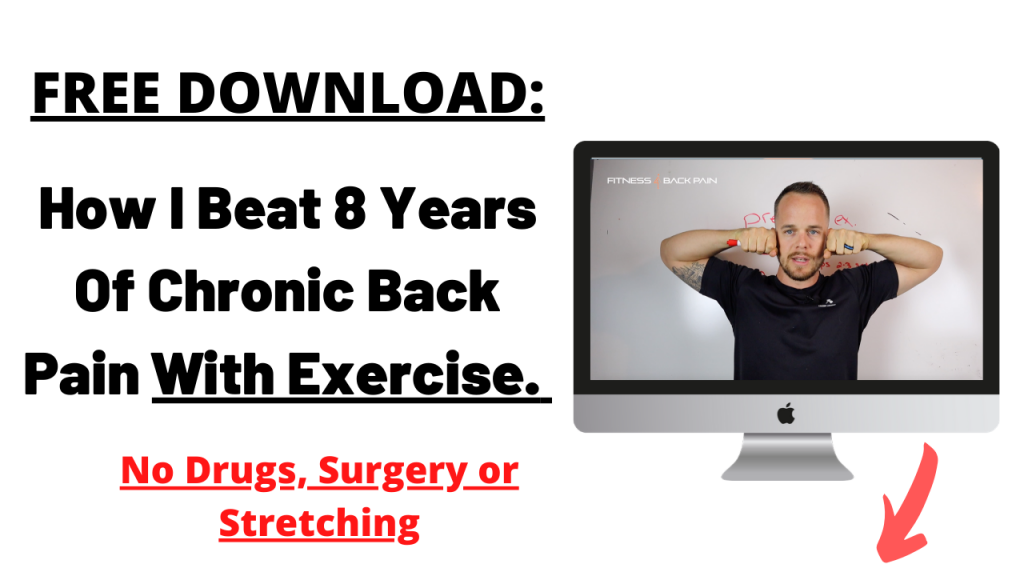3 Reasons Why Inversion Tables Won't Fix Your Back Pain
If you have ever considered buying or have been using an inversion table for any period of time for your back pain and you’re still not seeing the relief you want, you might want to stick around.
Today, I am going to share with you 3 reasons why inversion tables won’t fix your back pain.
A long long time ago I decided to jump in front of a camera (with a mic that was low on batteries followed up by sub-par video editing skills) and shot a video on my personal experience using an inversion table for back pain relief.
Since then it has become probably one of the most disliked inversion table videos on YouTube (most likely due to me being the only one on Youtube publicly announcing that it doesn’t work).
Fast forward to today and I still strongly believe the inversion table is not your best bet when it comes to long term back pain relief.
Do Inversion Tables Work For Lower Back Pain?
This depends on what results you’re looking for. If you had a long day on your feet and are feeling a bit “compressed” then sure hanging from a bar, doing a little distraction at the hip or hanging from an inversion table will bring your temporary relief at the moment. Not because it is fixing anything but because your body is simply responding to your natural “stretch reflex”.
It’s like spending 2-3 minutes stretching your hamstrings. You will feel great after but after a few hours the reason you strecthing them in the first place will more then likely come back.
What the inversion table doesn’t do it cure back pain. There is value in moderate decompression when dealing with disc injuries but most people don’t know what they are doing and end up chasing this stretch reflex rather than reversing their disc issue.
So in short, does the inversion table work for lower back pain?
No.
Who Should Not Use An Inversion Table
To be honest it is one of those use at your own risk kind of things. There are certain situations where medically supervised traction is needed for spine issues.
I know for me after rupturing my L5-S1 Disc it was one of the first things they did with me in the PT clinic I was in.
In my opinion (I am not a medical professional so always consult with your doctor) If you have a history of using stretching for relief or have had a spinal fusion I would stay away.
The reason being is MORE stretching is not going to be what your lower back needs. It’s stability (watch the video). Also, fusions need to be extra cautious that they are not messing with the healing process of their procedure.
If Inversion Tables Don't Work What Should I Do?
I thought you would never ask.
Your main focus needs to be in 3 areas.
One: Building SMART strength.
You can’t just do any old exercise routine. You are probably thinking about how you have already tried working out and it doesn’t work for you.
Odds are you haven’t followed the right coaching. Sensitive backs need a little extra love and you have come to the right place if you’re looking for it.
A great place to start is the Smart Strength Membership
Two: Move Better
No, your poor posture is not the sole reason you have back pain but your lack of awareness with how you move and carry your body needs to be addressed.
You’re super-sensitive right now and you want relief. You have to start looking for more ideal ways to move and carry your body if you ever want to beat your pain for good.
Three: Desensitize Your Pain System
Think of your body’s ability to send and receive pain signals similar to an alarm system in a car.
Most cars these days have them. They are good for us. When something bad is happening we want that pain signal or alarm system to work.
What happens with chronic pain people is their alarm system over time gets SUPER sensitive as if you were cranking up the sensitivity on your car alarm. Where before you would have to break a window or hit it pretty hard for it to go off but now a leaf could fall on the hood and your car’s alarm system goes full blast.
You have to reteach your body’s pain system to use its chill mode and not be so sensitive.
These are what I call the 3 Pillars Of Chronic Back Pain Relief. It’s the steak and potatoes of ALL of my content you can access for FREE through Instagram, my blog, or YouTube.
If you need more of a guided step by step process all you have to do is follow, check out Relief Academy.
It is hands down the best fist step you will ever take towards getting your life back.
Thanks for checking out this post and be sure to share it with your favorite social media platform! Someone you know may really need to hear this!
What has been your experience with using an Inversion Table? Good? Bad? Let me know in the comment section below!

